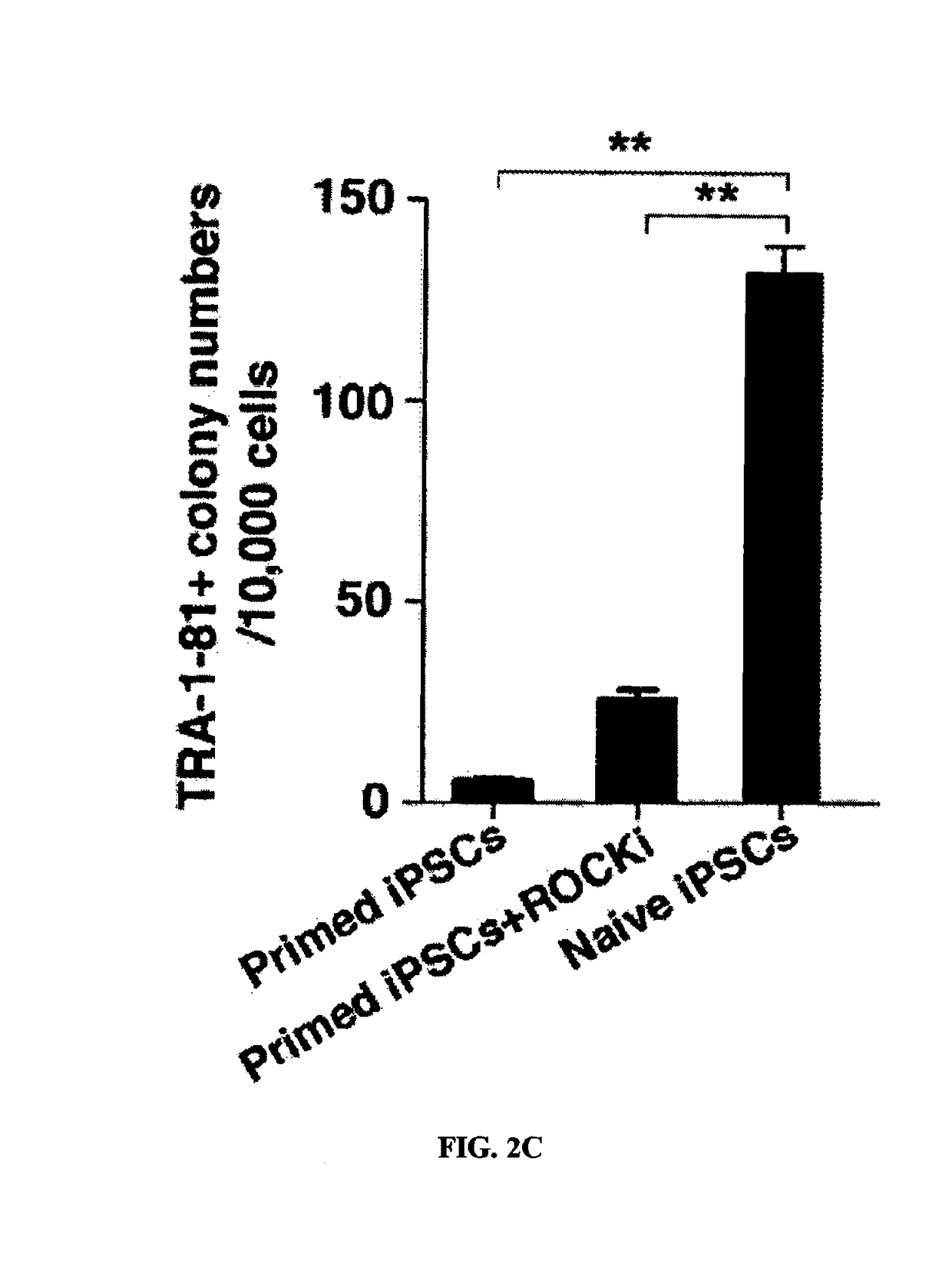Tgfß signaling independent naïve induced pluripotent stem cells, methods of making and use
- Summary
- Abstract
- Description
- Claims
- Application Information
AI Technical Summary
Benefits of technology
Problems solved by technology
Method used
Image
Examples
examples
[0116]Experimental Procedures
Generation of Rhesus Monkey Naive iPSCs from Primed iPSCs
[0117]The adult rhesus macaques (Macaca mulatta, #9, #2, #11, and #12) used in this study were housed in individual cages. All animal procedures were approved by the Laboratory Animal Center of the Chinese Academy of Military Medical Science, and the use of rhesus macaque somatic cells was licensed by Peking University Institutional Review Board. Fibroblasts were isolated from the ear edge of rhesus monkeys and infected with retroviral vectors containing reprogramming factors OCT4 and KLF4. Medium supplemented with the small molecules was changed every 2 days. Primed iPSC colonies were selected on approximately days 25-35 after viral transduction and expanded in human ESC medium (D / F12+20% knockout serum replacements [KSR]+4 ng / ml bFGF). For naive state conversion, primed iPSC colonies were dissociated by accutase and reseeded on feeder cells. The optimized conversion medium with 4 ng / ml bFGF, 10 n...
PUM
| Property | Measurement | Unit |
|---|---|---|
| molecular weight | aaaaa | aaaaa |
| molecular weight | aaaaa | aaaaa |
| molecular weight | aaaaa | aaaaa |
Abstract
Description
Claims
Application Information
 Login to View More
Login to View More - R&D
- Intellectual Property
- Life Sciences
- Materials
- Tech Scout
- Unparalleled Data Quality
- Higher Quality Content
- 60% Fewer Hallucinations
Browse by: Latest US Patents, China's latest patents, Technical Efficacy Thesaurus, Application Domain, Technology Topic, Popular Technical Reports.
© 2025 PatSnap. All rights reserved.Legal|Privacy policy|Modern Slavery Act Transparency Statement|Sitemap|About US| Contact US: help@patsnap.com



